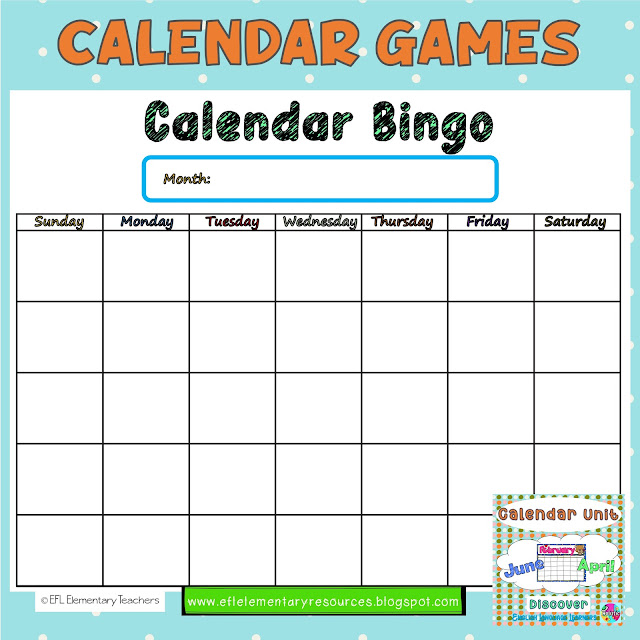I see that some book’s scope and sequence have
the structure using only the birthday month. Have a student come to the front
and pick the card of the month of their birthday.
Teacher: When’s your birthday?
Student: June.
Teacher: It’s in June. (Stress the word IN and write it on the board. Grab the
month card of June and place it next to the word in)
Graph the birthday months of your
class. Place the months of the year around your classroom.
Have the students look for the Month of their Birthday and stand there.
Teacher: This is January. How many students have their
birthday in January?
Students: one!
Continue
with all the months.
Depending
on the level of your students and the scope and sequence of your book, continue
introducing the birthday date. But
first, review all the ordinal numbers using the cards.
I
prepared a worksheet for the students to notice the difference in writing the
ordinal numbers.
Have
the students match the ordinal number cards and the words cards as a review.
Then,
let’s move on to the birthday date.
Place the month and date of your birthday on the board and model for the class.
Write the word ON.
Teacher: My birthday is on August 29th.
Have
the students find their birthday month cards and say their sentence to the
class.
Have
the students write their birthdate on a piece of paper.
As
you place the month cards around the classroom. At your signal have the
students stand up and look for their birth month and stand there. Hand them their birthday ordinal number.
Calendar. I am adding a perpetual calendar template
. I can customize the headings to adjust
to the country you are at, send me an email: ei98srl@gmail.com)
Students
can help create the calendar, just glue the proper heading and have the
students research the days and complete the template.
Ask
questions:
Teacher: When is Sara’s birthday?
Students: It on October 20th.
Students write their name in the birthday date
box.
More flashcards.
I thought that extra practice is required for this structure. I made some
children flashcards with birthdates.
Teacher: When is his birthday?
Students: It’s on June 28th.
Here
is the complete set.
Worksheets!
Worksheet 1 Questionnaire.
Students walk around the classroom asking the questions and writing the
answers.
Then,
they cut and glue the worksheet on their notebooks and write sentences about
the results of the questionnaire.
Worksheet 2. Dictate how to color each month as a
listening exercise.
Teacher: Color June pink!
Have
the students trace the date you say.
Teacher: April 11th!
Students
complete their worksheet. Then, have the students cut each box and write a sentence.
Worksheet 3. Make a
calendar. Each worksheet has an
empty space for the month. Students cut the month of their birthday and glue
onto the empty space. They also write the days of the month and their name on
their birthdate. Finally, complete the sentences. You can do a show and tell to
the class.
Worksheet 4. The
same as the other worksheet, dictate the color of each month or even better,
have an individual student dictate the color of each month. Then, students
write sentences using his or her birthday.
Worksheet 5. There are Birthdays in the family!Students
cut out and glue all the family members and write their corresponding birthdays
on their notebooks.
I
made an extra set of Family Birthday flashcards to review.
Worksheet 6. Ordinal
Numbers Bingo. Students write any of the 31 ordinal
numbers on the 9 squares. Use the Ordinal numbers cards to call BINGO!
Worksheet 7. More Family
review. Students draw or cut out pictures of their family
members and complete the worksheet.
















.jpg)













































